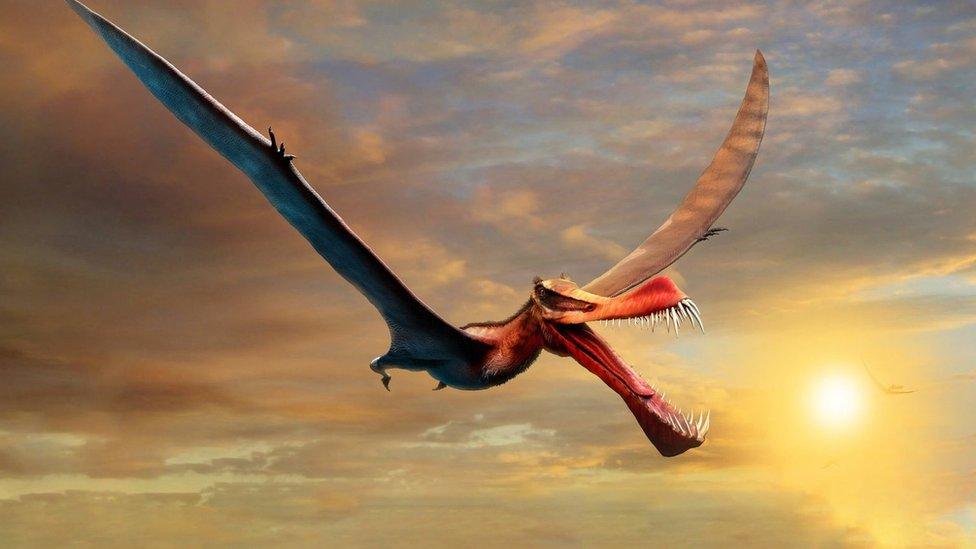Pterosaur discovered in Australia 'closest thing to real life dragon'
- Published
- comments

Described as 'the closest thing to a real life dragon,' scientists have discovered a new 'fearsome beast' from the time of the dinosaurs!
The creature's fossil was found in Australia and is thought to be a new species of pterosaur, a group of winged reptiles that were the largest flying animals that have ever existed.
It soared above the oceans that once covered the Australian outback during the Cretaceous period more than 100 million years ago.
Tim Richards, who works in a dinosaur lab at the University of Queensland in Australia, said: "The new pterosaur, which we named 'Thapunngaka shawi', would have been a fearsome beast, with a spear-like mouth and a wingspan around seven metres."
That's about four times the length of a human lying down!
"It's the closest thing we have to a real life dragon," he added.
"It was essentially just a skull with a long neck, bolted on a pair of long wings. This thing would have been quite savage. It would have cast a great shadow over some quivering little dinosaur that wouldn't have heard it until it was too late."
It would have cast a great shadow over some quivering little dinosaur that wouldn't have heard it until it was too late.
Thapunngaka shawi's skull was more than a metre long and filled with around 40 teeth designed to catch the fish living in the Eromanga Sea, which doesn't exist in today's world.
Dr. Steve Salisbury, also from the University of Queensland explained that a boney bump at the top and bottom of the creature's jaw probably helped the animal to cut through the air as it flew at speed.
"What was particularly striking about this new species was the massive size of the bony crest on its lower jaw, which it presumably had on the upper jaw as well," he said.
"These crests probably played a role in the flight dynamics of these creatures, and hopefully future research will deliver more definitive answers."
The animal's body had several design features for flight, including light and hollow bones, but that also means pterosaur remains are harder to find and were less likely to become fossilised like its cousins, the dinosaurs that lived on land.
"It's quite amazing fossils of these animals exist at all," Tim Richards says.
The fossil was found in a quarry just northwest of Richmond in Queensland Australia just over ten years ago by Len Shaw who was digging for valuable materials.
Originally the site was the home of indigenous Australian people known as the Wanamara.
The name Thapunngaka is the combined Wanamara words for 'spear' and 'mouth' and the word shawi, honours the fossil's discoverer Len Shaw.
"So the name means 'Shaw's spear mouth'," said Dr Salisbury.
- Published29 October 2020
- Published23 April 2019
